Take your pick
In what aircraft should you learn to fly? Our editors weigh in on their favorite trainers
By AOPA Media Staff
What aircraft is best for learning to fly? The answer depends on many factors, most of them personal: what you want to fly after earning a certificate, your physical comfort, your affinity for technology, and personal preference, to name a few. We can’t predict which trainer will be your perfect fit, but here are a few of our favorites.

Piper Cherokee
Make it easier
Learn to fly in a Piper Cherokee
By Jill W. Tallman
Learning to fly is hard. And learning to land probably causes more angst among student pilots than any other maneuver. So why not give yourself a break and learn to fly in an airplane that was designed to be easy to fly—and land?
The Piper Cherokee 140 was designed to train pilots, and it does that very well. It’s docile, stable, and forgiving. It has no obnoxious adverse yaw characteristics, and it doesn’t stall abruptly. Those are characteristics you want when you’re first learning to fly.
Once you master landing a Piper Cherokee, you’ll wonder what all the fuss about learning to land is about.
If you crave more horsepower, Piper Aircraft makes the 180-horsepower Archer line, and you can step up from there to a Piper Arrow for complex training, and to a Seminole for multiengine work—and the list goes on, all the way up to Piper’s turbine-powered M500 and M600.
Some will say it’s better to learn to fly in an airplane that does have distinct adverse yaw characteristics so that you will become a better stick and rudder pilot. I will say only that we crawl before we walk, and we walk before we run.

Van’s RV-12
Fly like a prodigy
The RV–12 makes pedestrians into pilots
By Dave Hirschman
The perfect trainer has responsive, well-balanced flying qualities; excellent visibility; ruggedness; mechanical simplicity; modern avionics, reliability, and low operating costs. This idealized machine should reward proper technique without masking mistakes. And since a flight trainer is a flying classroom, it ought to be comfortable and quiet, too.
All these attributes are present in abundance in the Van’s Aircraft RV–12, an easy-to-underestimate aircraft that may be the best tool ever created for turning pedestrians into pilots. The RV–12 is built around a miraculous motor. The Rotax 912 is easy to start, hot or cold, and mixture control is automatic (see “What Am I: Rotax Engine, p. 14). Fuel consumption is low, and it prefers unleaded auto gas instead of avgas—so the price of the fuel you buy can be reduced by about half.
The cockpit is surprisingly wide, visibility is outstanding, and glass-panel avionics allow the student to get accustomed to the colorful presentation of modern instrumentation.
In the air, the RV–12 control forces are light and extremely well harmonized. Proper technique and coordination are a pleasure, botched maneuvers are a pain, and the differences between them are obvious. The RV–12 is a patient teacher, however, and it doesn’t depart controlled flight without insistent provocation.
So much of learning how to fly is learning how to land, and this is an area where the RV–12 shines. New and veteran pilots, regardless of what they’ve flown before—or whether they’ve flown anything before—consistently make aesthetically pleasing, emotionally gratifying, light-as-a-feather landings in the RV–12.
The airplane has a way of making students, and their instructors, look like prodigies.

Cessna 150/152
The little airplane that could
The Cessna 150/152 taught a generation to fly
By Sarah Deener
In fourth grade, my parents sent me to school with a trumpet. A second-degree hand-me-down, it had a worn finish and sometimes-sticky valves, but it played Hot Cross Buns just fine. And it took a few dings before I moved on to a nicer model in high school.
Sleek, new airframes and sophisticated avionics can wait. Learn to fly in a Cessna 150 or 152.
With more than 30,000 built, the 150/152 series was the trainer of the pilot boom in the 1960s and ’70s, but somewhere along the way we convinced ourselves we needed more—more shoulder room, more seats, more digital displays. Of course, a larger aircraft makes sense for anyone who can’t fit safely or comfortably in the cozy two-seater, and you may argue that the average pilot isn’t the FAA-standard 170 pounds anymore. But “average” isn’t worth much to an individual, and I can fly the 152 with a passenger and useful load to spare. Why burn extra avgas for an empty back seat and a little extra shoulder room?
Don’t underestimate what the 150/152 has to offer. Want to continue on to instrument training? Some come IFR equipped. Yearn for the thrill of unusual attitudes? Try an Aerobat. Going places? A cruise speed around 100 mph is still faster than traffic on the turnpike. And, with the Cessna 150 and 152, that elusive dream of aircraft ownership just might be within reach.

Cessna 140
Learn tailwheel first
Shortcut to great fun
By Kollin Stagnito
If your dream is to fly a Piper Super Cub, Van’s RV–8, or P–51 Mustang—among many other airplanes pilots drool over—you’re going to need a tailwheel endorsement. Learning to fly in a tricycle gear airplane and then transitioning to a conventional gear (tailwheel) airplane will add 5 to 10 hours to your training. Consider starting your primary training in a classic tailwheel-equipped airplane: the Cessna 140.
Almost 7,000 Cessna 120/140/140A airplanes were manufactured between 1946 and 1951 (with the majority being 140s) and many are still flying today—mainly because they’re inexpensive to operate, fun to fly, and make great trainers.
The Cessna 140 demands precise rudder usage during every takeoff and landing to track the runway centerline. Appropriate rudder usage is also required during turns to maintain coordinated flight. But these rudder skills don’t take long to learn and will translate to every other airplane you will ever fly. Transitioning to tricycle gear after learning tailwheel is a cinch—and requires no endorsement.
Oh, and there is a bit of a cool factor. As if learning to fly any airplane wasn’t cool enough, being one of the estimated 15 percent of pilots who have learned to fly a tailwheel airplane earns instant cred for your stick and rudder skills.
Cubs, Luscombes, Taylorcrafts, and Champs also offer low-cost entry into tailwheel flight training and aircraft ownership, with the added benefit that many are classified as Light Sport aircraft that can be flown with a minimum of a sport pilot certificate and valid U.S. driver’s license—no medical required.
Robinson R22
Give it a whirl
The R22 is the perfect intro to vertical flight
By Ian J. Twombly
Why is the Robinson R22 the perfect training helicopter? Let me count the ways.
Training aircraft should be reliable, robust, inexpensive, maneuverable yet stable, and have power that could be described as adequate. This could be the sales brochure for the R22.
When it first debuted in the Carter era, the R22 was an immediate success for one simple reason: cost. It was a fraction of the cost to own and operate of the other training and small personal helicopters of the day, and that helped its popularity to explode—and probably expanded the world of rotorcraft beyond what otherwise would have been possible.
But over the years people have come to see the R22 as a great trainer in its own right. R22s are reliable, easy to work on, come with phenomenal support, and are a joy to fly. Designer Frank Robinson had two basic goals when he created the R22: Make it cheap and make it light. That lightness has advantages and disadvantages. It makes it maneuverable to the edge of twitchy, but it also creates a safety consideration in the case of a power problem. Robinson devotees spin these as a positive and will tell you that both combine to produce exceptional pilots.
Today, it’s almost a pointless argument. You may find a Schweizer, Enstrom, Guimbal, or even a Hiller or Bell on the flight line. But they are thinning out as the R22 continues to be the trainer of choice.
Advanced Training
What about IFR?
Choosing an instrument trainer
Sure, the airframe matters for instrument training—high wing loading, for instance, makes a more stable platform for flying the methodical procedures of IFR flight. But when the world outside disappears behind a hood or IFR training glasses, it’s clear the biggest decision to make involves the panel in front of you.
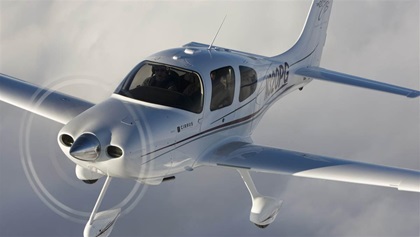 Go glass
Go glass
The glass-cockpit SR20 will prepare you for today’s world
By Dave Hirschman
The Cirrus SR20 is the gold standard for instrument students embarking on professional flying careers.
The Garmin Perspective digital IFR glass panel provides exceptional situational awareness with graphical weather, traffic, and terrain displays that have become the new normal for modern airline and military cockpits. The single power lever in the SR series is similar to what today’s students are likely to see in future turboprops and jets.
Those of us who learned to fly IFR using “six-pack” mechanical gauges like to think that developing an instrument scan builds character, but why should today’s students have to suffer through our old, antiquated techniques? (Ancient mnemonics such as “tune, time, twist, throttle, talk” for procedure turns and “turn 10, twist 10” for keeping the course deviation indicator centered during circling approaches should be relegated to the ash heap of history.)
Also, instrument students should gain experience in actual instrument conditions during training, and doing so in a parachute-equipped airplane just makes sense. So much of instrument training necessarily takes place at relatively low altitudes during the approach and departure phases of flight, and having a parachute available is a good insurance policy in case of an engine failure in the clouds.
The U.S. Air Force, French air force and navy, and Saudi Arabia all chose the SR20 for their pilot trainees, and so have numerous U.S. college aviation programs. Evaluators from each organization studied the same set of factors before reaching the same conclusion and buying the same airplane—and they’ve reached the right conclusion. The SR20 is a superior IFR trainer. —Dave Hirschman
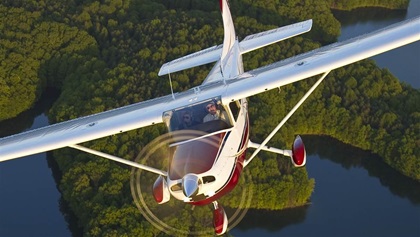 Slay the dragon
Slay the dragon
A legacy Cessna 182 will prepare you for the real GA fleet
By Sarah Deener
Confession: I don’t remember life before personal computers. I learned to fly in a Garmin G1000-equipped airplane nearly 15 years after the term “children of the magenta line” entered the pilot lexicon—and I’m here to tell you to learn to fly IFR on old-fashioned “steam gauge” instruments.
Don’t get me wrong: I love the reliability of glass avionics and the situational awareness provided by modern multifunction displays. But I discovered a few months after earning my private pilot certificate that those handy displays weren’t always worth the rental premium—and earning my instrument rating in the analog Cessna 172 on the flight line would save me hundreds of dollars that could then be applied to more flying.
But it’s not only about money. Instrument training is where you form the habits that will serve you for years to come. Learn the quirks and potential failures of analog instruments first, and transitioning to a full-featured glass panel will be a simple exercise in buttonology. But learn to rely on flight path markers, overlaid holding patterns, automatically sequenced waypoints, and other useful features in training, and transitioning to a steam-gauge airplane will be more like a second rating than a checkout.
The Cessna 182 is a perfect platform because it’s the kind of airplane I actually want to fly IFR: stable, faster than the 172, and an easy transition from lighter Cessna trainers. Newer ones come with a full G1000 suite, so you can trade up if you get that promotion or win the lottery. And many used models have upgraded GPS units if you want the additional situational awareness of a system younger than your Palm Pilot.
Glass cockpit displays are steadily becoming more widely available in light GA airplanes, but don’t deny yourself access to the many legacy airplanes that don’t have them. Learn to fly on analog gauges, and you won’t be intimidated when it’s just you and the CDI. —Sarah Deener
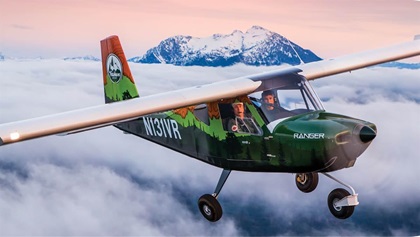
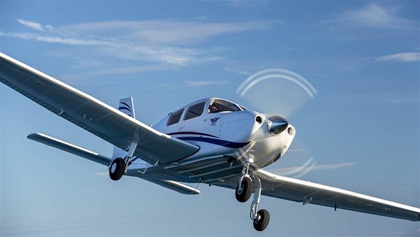
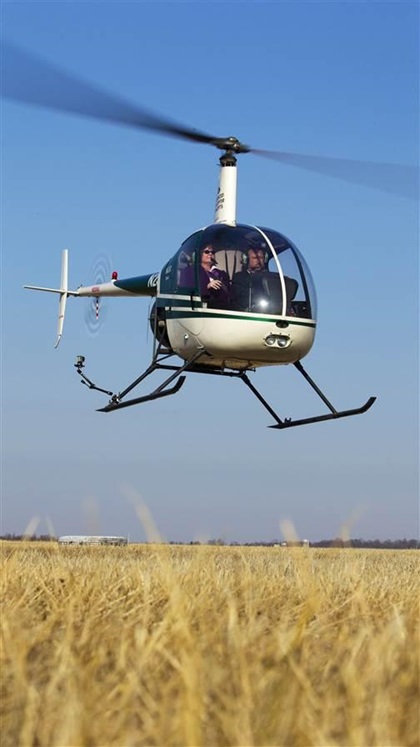 Robinson R22
Robinson R22

